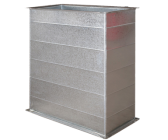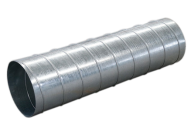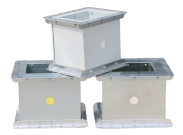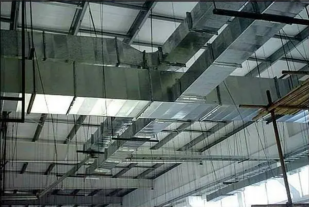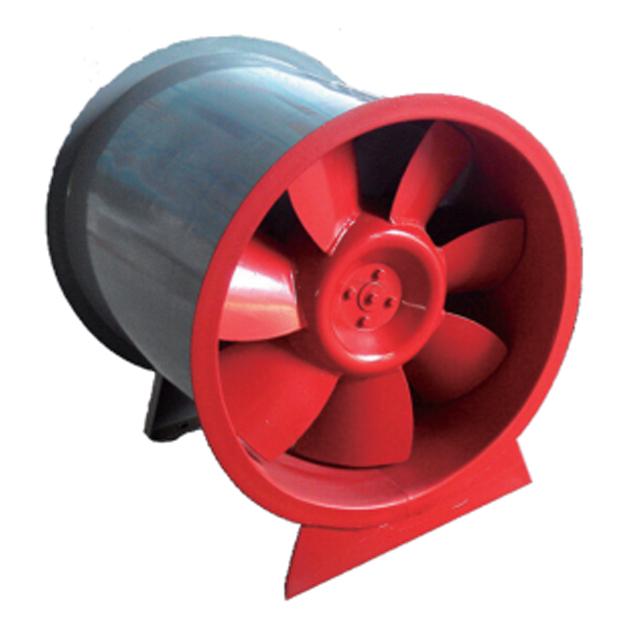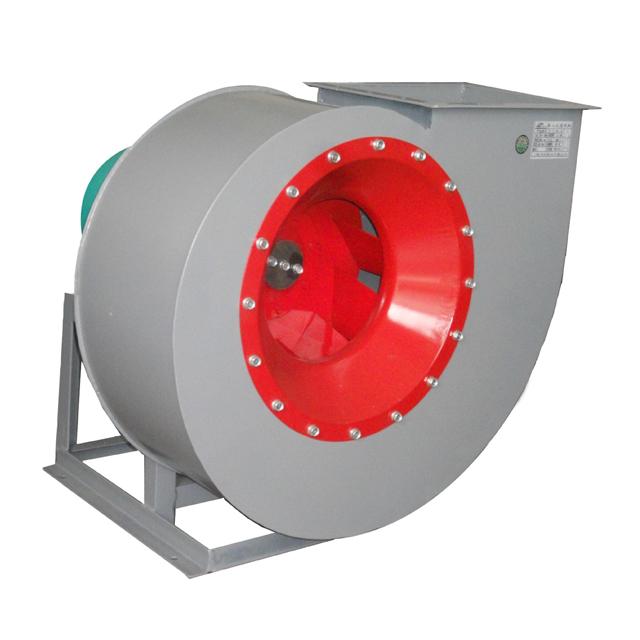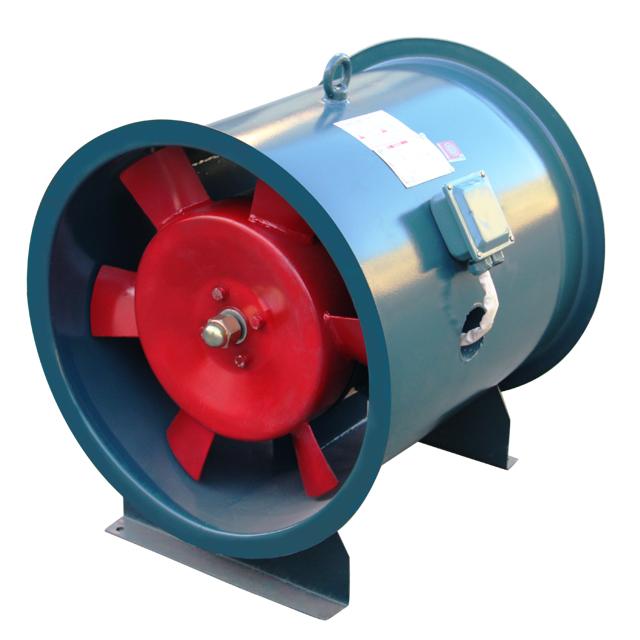In the ventilation engineering, how to choose the air duct
1. Safety principle: to ensure that the air duct materials meet the safety standards
In ventilation engineering, it is crucial to ensure that the duct material meets safety standards. This is not only related to the normal operation of the system, but also directly related to the life safety of personnel. According to the relevant international and domestic standards, the air duct materials must meet a series of safety requirements, including but not limited to fire prevention, corrosion prevention, high temperature resistance, etc. For example, metal air ducts are widely used in ventilation systems because of their good fire prevention performance and structural strength. However, metal duct may also have corrosion problems in specific environments, therefore, in the selection of metal duct, its corrosion resistance must be considered to ensure that corrosion will not cause safety risks in the long-term use process.
Figure 1 (left) galvanized duct (right) spiral duct
Non-metal duct, such as plastic duct, also have certain advantages in some occasions, such as light weight, easy installation, etc. However, the fire performance of non-metal duct is usually poor, once the fire occurs, easy to spread quickly. Therefore, when selecting non-metal air pipes, special attention must be paid to their fire rating to ensure compliance with relevant safety standards. In addition, non-metal air pipes may also deform or melt in high temperature environment, therefore, when used in high temperature environment, we must choose materials with good high temperature resistance.
In recent years, with the progress of science and technology, the composite air duct has gradually emerged. This new material combines the advantages of metal and non-metal, with excellent fire prevention, corrosion resistance and high temperature resistance. However, due to the relatively high price of composite air pipes, some projects may prefer traditional metal or non-metal air pipes for cost considerations. However, in the long run, the selection of composite air duct that meets the safety standards can not only reduce the potential loss caused by safety accidents, but also improve the stability and reliability of the system.
Figure 2. Composite air duct
In practical engineering, in order to ensure that the duct materials meet safety standards, material selection and acceptance must be carried out in strict accordance with relevant standards and specifications. At the same time, the construction unit and the supervision unit should also strengthen the quality supervision and management of the air duct materials, to ensure that each batch of materials meet the safety requirements. In addition, for the air duct system that has been put into use, regular safety inspection and maintenance should also be carried out to find and deal with potential safety risks in time.
2. Economic principles: consider cost-benefit and long-term operating costs
In the air duct selection of ventilation engineering, the economic principle is a crucial link. It requires us to fully consider the cost-effectiveness and long-term operating costs while ensuring the air duct quality and performance. First, from a cost-effectiveness perspective, we need to conduct a cost analysis of different types of air duct, including material cost, processing cost, installation cost, etc. For example, although the initial investment is high in the metal duct, its durability and long-term stability are better, which can reduce the maintenance cost in the later period. Although the initial investment of non-metal duct is low, the maintenance cost may rise due to material aging, deformation and other problems. Therefore, when choosing the air duct, we need to conduct a comprehensive assessment of the cost-effectiveness according to the actual situation and budget of the project.
Secondly, the long-term operating cost is also an important consideration of the economic principle. The operation cost of the ventilation system mainly includes energy consumption and maintenance cost. When choosing the air duct, we need to pay attention to its energy-saving performance and maintenance convenience. For example, the use of energy-efficient duct materials and designs can reduce the energy consumption of the system, thus reducing the operating costs.At the same time, the choice of easy installation, disassembly and maintenance of the air duct, can reduce the maintenance costs and labor costs.
3. Adaptation principle: choose the appropriate air duct type according to the project requirements
In ventilation engineering, the choice of air duct is very important, which is directly related to the operation efficiency and safety of the whole system. According to the adaptability principle, we need to choose the appropriate duct type according to the specific needs of the project. First, we need to consider the scale and complexity of the project. For large and complex ventilation systems, metal duct pipes often become the first choice because of its rugged, durable, high temperature resistance, corrosion resistance and other characteristics. For example, in large industrial plants or commercial complexes, metal air ducts can ensure smooth and stable air circulation because of their good compressive resistance and sealing ability.
However, in some special occasions, such as hospitals, laboratories and other places with extremely high air quality requirements, non-metallic air ducts are favored because of their excellent thermal insulation, sound insulation and corrosion resistance performance.
With the progress of science and technology and the continuous emergence of new materials, composite air ducts have gradually become the new favorite in the market. These duct combine the advantages of metal duct and non-metal duct, with the characteristics of light weight, high strength, corrosion resistance, easy installation, especially suitable for some places with high performance requirements of the duct. For example, in high-rise buildings or underground garages, composite duchave become an ideal choice because of their advantages of simple installation and small space occupation.
In conclusion, when choosing the air duct type, we need to consider it comprehensively according to the specific needs of the project. Through in-depth analysis of the project scale, complexity, use environment and performance requirements and other factors, combined with the characteristics and advantages of various duct types, we can choose the most suitable duct type, so as to ensure the normal and efficient operation of the ventilation system.
1, metal air duct: characteristics, applicable scenarios, advantages and disadvantages
In ventilation engineering, metal air pipes are favored for their unique properties and a wide range of application scenarios. Metal air ducts, with their high strength, corrosion resistance and high temperature resistance, play an important role in all kinds of industrial and commercial buildings. First of all, the metal duct has high strength and stability, can withstand large pressure and load, to ensure the stable operation of the ventilation system. Secondly, the metal duct has good corrosion resistance, can be used for a long time in humid, acid and alkali and other harsh environment, reduce maintenance costs. In addition, the metal duct also has good high temperature resistance, suitable for high temperature environment ventilation system.
Metal duct have a wide range of scenarios, including but not limited to industrial plants, commercial complexes, hospitals, schools and other places. In industrial plants, metal air ducts can effectively eliminate harmful gases and dust, and ensure the health and production safety of workers. In commercial complexes, metal duct can ensure the circulation and comfort of indoor air and improve customers' shopping experience. In places such as hospitals and schools, metal air ducts can protect the fresh and hygienic air and reduce the spread of disease.
However, metal duct have some disadvantages. First, the cost of metal ducts is relatively high and may not be applicable for some projects with limited budget. Secondly, the installation and maintenance of metal duct need certain professional skills and experience. If the installation is improper or the maintenance is not timely, it may lead to the system performance decline or failure. In addition, the metal duct in the transportation and installation process also need to pay attention to the prevention of scratches and deformation problems.
2, composite material duct: the advantages and applications of new materials
In the selection of air duct of ventilation engineering, composite material air duct, as a new material, is gradually showing its unique advantages and wide application prospects. Because of its light weight, high strength, corrosion resistance and easy processing, the composite air duct plays an increasingly important role in the ventilation system.
First, the composite air duct has significant light and high strength characteristics.Composite ducts are lighter but more powerful than conventional metal ducts. This feature makes the composite air duct more convenient in the process of transportation and installation, and reduces the difficulty and cost of construction. At the same time, its high strength also ensures the stability and safety of the air duct in the long-term use process.
Secondly, the composite air duct has excellent corrosion resistance. Ventilation systems are often in a complex and changeable environment, and metal air ducts are vulnerable to corrosion and damage. The composite air duct can resist the erosion of a variety of chemicals and maintain long-term stability and reliability. This characteristic makes the composite air duct widely used in the corrosive industries such as chemical industry and medicine.
In addition, the composite duct also has good machining performance and design ability. Through advanced production technology and molding technology, air pipes of various shapes, sizes and properties can be produced to meet the needs of different projects. At the same time, the composite air duct can also be customized according to the need to achieve personalized design.
1. Calculation and determination of air duct size
In ventilation engineering, the calculation and determination of air duct size is a crucial link, which is directly related to the operation efficiency and energy consumption of the system. The calculation of air duct size is usually based on parameters such as air volume, wind speed and pipe resistance. First, we need to determine the required air volume according to the project requirements, which usually depends on the area of the building, personnel density and process requirements. Then, based on the selected wind speed range, we can calculate the cross-sectional area of the air duct. In practice, we usually use some empirical formulas or calculation software to assist in completing this step, so as to ensure the accuracy and reliability of the calculation results.
Take a large commercial complex as an example, its ventilation system needs to meet the heat dissipation needs of a large number of people and equipment. In the design process, simulation software can be used to calculate the duct size. We simulated the flow distribution and resistance at different wind speeds and pipe layouts. In actual operation, the ventilation system can not only meet the heat dissipation requirements, but also achieve lower energy consumption and noise levels.
In addition to the air volume and wind speed, pipe resistance is also an important factor affecting the air duct size. The size of pipe resistance depends on factors such as pipe length, number of elbows, pipe material and surface roughness. Therefore, when calculating the air duct size, we need to consider these factors comprehensively to ensure the smooth operation of the system.
It is worth noting that the calculation of the duct size is not static. As the engineering requirements and operating conditions change, we may need to adjust and optimize the air duct size. For example, when the air conditioning system is running, if the indoor temperature changes greatly or the personnel density increases, we may need to increase the air volume or adjust the wind speed, so we need to adjust the size of the air duct accordingly. Therefore, we need to be flexible and adjustable to accommodate various changes during the design and implementation of ventilation engineering.
2. Optimization and adjustment of air duct layout
In ventilation engineering, the optimization and adjustment of air duct layout is the key link to ensure the efficient operation of the system. Reasonable layout design can not only improve the air circulation efficiency, but also reduce energy consumption and operating costs. First of all, we need to determine the direction and path of the air duct according to the structural and functional requirements of the building. For example, in large commercial complexes, the simulation analysis can calculate the path and speed of air flow to optimize the air duct layout. Through simulation analysis, the air duct is arranged in the central area of the building, and the branched layout can significantly improve the air circulation efficiency and reduce energy consumption.
In addition, the optimization of the duct layout also needs to consider the size and shape of the duct. Too large or too small air duct size will affect the air circulation effect. Based on the engineering practice experience, we usually use the empirical formula and calculation software to determine the size of the air duct.
In the process of adjusting the duct layout, we also need to pay attention to the connection and sealing technology of the duct. Good connection and sealing technology can ensure the smooth air circulation and prevent the occurrence of air leakage phenomenon. We usually use flange connection and sealing strip to ensure the duct connection and sealing effect. At the same time, in the process of air duct installation, we also need to pay attention to avoid the problems such as too small bending radius and excessive distortion, in order to ensure the smooth air circulation.
In addition to the air volume and wind speed, pipe resistance is also an important factor affecting the air duct size. The size of pipe resistance depends on factors such as pipe length, number of elbows, pipe material and surface roughness. Therefore, when calculating the air duct size, we need to consider these factors comprehensively to ensure the smooth operation of the system.
It is worth noting that the calculation of the duct size is not static. As the engineering requirements and operating conditions change, we may need to adjust and optimize the air duct size. For example, when the air conditioning system is running, if the indoor temperature changes greatly or the personnel density increases, we may need to increase the air volume or adjust the wind speed, so we need to adjust the size of the air duct accordingly. Therefore, we need to be flexible and adjustable to accommodate various changes during the design and implementation of ventilation engineering.




